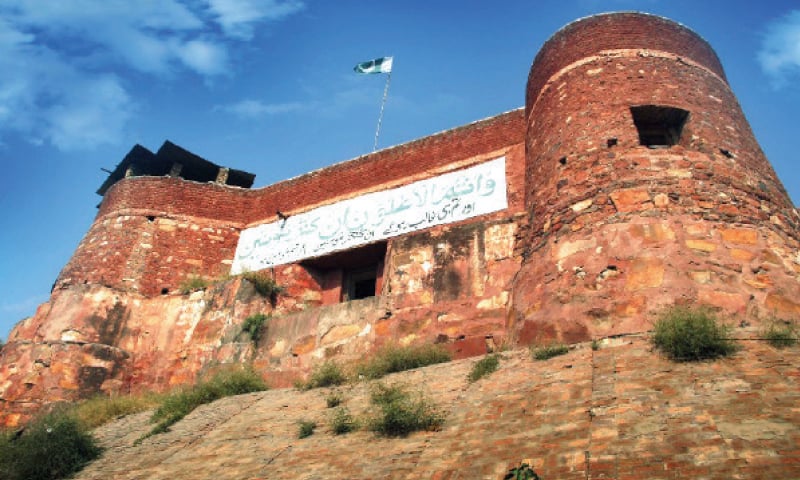Jamrud Fort, perched on a rocky outcrop overlooking the historic Khyber Pass, stands as a formidable sentinel guarding the gateway to the Indian subcontinent. Located near the town of Jamrud in the Khyber District of Pakistan’s Khyber Pakhtunkhwa province, this ancient fortress has played a crucial role in the region’s tumultuous history, bearing witness to centuries of conquests, conflicts, and cultural exchanges.
The origins of Jamrud Fort trace back to the 19th century during the Sikh Empire’s rule over the Punjab region. Under the leadership of Maharaja Ranjit Singh, the Sikhs sought to extend their dominion into the turbulent northwest frontier, including the strategic Khyber Pass. Recognizing the pass’s significance as a vital artery for trade and military campaigns, the Sikhs constructed Jamrud Fort in 1823 to assert their control over the region.
Constructed atop a rocky ridge overlooking the narrowest point of the Khyber Pass, Jamrud Fort was strategically positioned to monitor and regulate the movement of people and goods through this rugged terrain. Its robust fortifications, including thick walls, bastions, and watchtowers, served as a deterrent against would-be invaders while providing a vantage point for surveillance and defense.
Throughout its history, Jamrud Fort witnessed numerous conflicts and battles as rival powers vied for control of the Khyber Pass. One of the most significant episodes occurred in 1837 when the Sikh garrison at the fort, under the command of Jamrud’s governor Hari Singh Nalwa, repelled a fierce assault by Afghan forces led by Dost Mohammad Khan. Despite being vastly outnumbered, the Sikhs successfully defended the fort, securing their hold over the pass.
The British East India Company, expanding its influence in the Indian subcontinent, later inherited control of Jamrud Fort following the Sikh Empire’s collapse. Recognizing its strategic importance, the British further strengthened the fort’s defenses and used it as a base for military expeditions into Afghanistan and Central Asia. The fort also served as a crucial waypoint along the Grand Trunk Road, facilitating trade and communication between British India and the northwest frontier.
In the decades that followed, Jamrud Fort continued to play a significant role in the region’s geopolitics, witnessing conflicts such as the Anglo-Afghan Wars and the struggle for independence from British colonial rule. Despite the changing tides of history, the fort remained a symbol of resilience and endurance, standing as a testament to the enduring spirit of the people who inhabited these rugged lands.
Today, Jamrud Fort stands as a proud monument to Pakistan’s rich heritage and storied past. While no longer an active military outpost, it continues to attract visitors and history enthusiasts, drawn by its historical significance and panoramic views of the surrounding landscape. As a guardian of the Khyber Pass, Jamrud Fort remains an indelible reminder of the region’s turbulent history and the enduring legacy of those who defended its ancient pathways.

